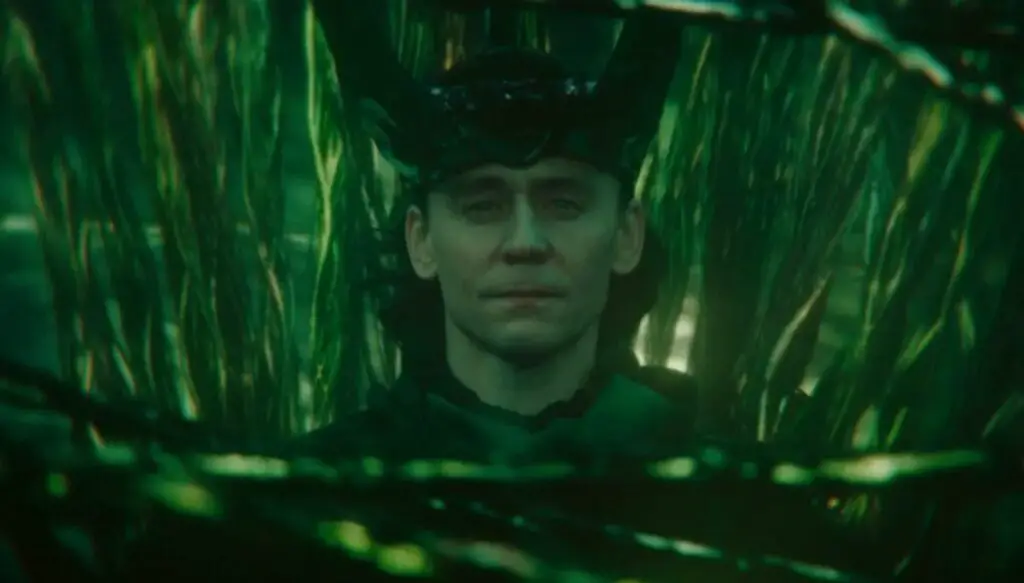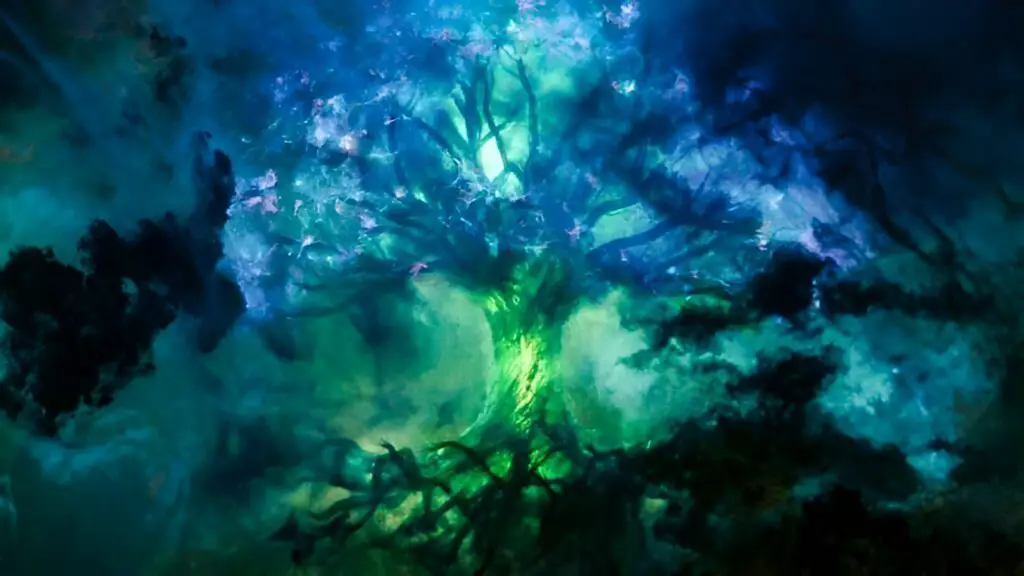The finale of “Loki” Season 2 marks a pivotal moment in the Marvel Cinematic Universe (MCU). In this climactic episode, we witness the transformation of the Temporal Variance Authority (TVA) into a multiversal tree, a symbolic representation deeply rooted in both Norse mythology and the overarching narrative of the MCU. This transformation is not just a mere plot device, but a profound metaphor that encapsulates the journey of Loki, the God of Mischief, and the evolution of the MCU’s storytelling since its inception.
Loki’s ascension to become the guardian of time is a significant turning point in his character arc. By stabilizing the branched timelines and transforming the Temporal Loom into a multiverse tree resembling Yggdrasil, the sacred ash tree in Norse mythology, Loki redefines his role from the God of Mischief to a more complex figure. This transition aligns with the theme of interconnectedness and cyclical nature of life and death, as symbolized by Yggdrasil. The multiverse tree not only represents the interconnected realms but also signifies Loki’s growth and redemption. His decision to stabilize the dying timelines and assume the role of their guardian, albeit at the cost of his own freedom and companionship, is a testament to his evolved understanding of responsibility and sacrifice.
Yggdrasil’s Significance: From Mythology to the MCU

The use of Yggdrasil as the multiverse tree in “Loki” is a deliberate choice that ties back to both Norse mythology and the MCU’s earlier references. In classic Norse mythology, Yggdrasil binds the Nine Realms together, with its roots and branches symbolizing the interconnected lives within these realms. This concept of interconnectedness mirrors the idea of a multiverse, where different timelines and realms coexist and influence each other. The transformation of the Temporal Loom into a Yggdrasil-like tree in “Loki” is more than just a visual spectacle; it represents the culmination of Loki’s journey and his acceptance of a new role that transcends his previous identity.
The MCU has hinted at the significance of Yggdrasil in the past, most notably in the 2011 film “Thor,” where it was described as holding together the cosmos. In “Loki,” this idea is expanded upon, with the tree becoming central to the structure of the multiverse. Loki’s actions of literally holding onto the branched timelines, reminiscent of Yggdrasil’s role in Norse mythology, is a powerful metaphor for his character’s transformation and the expansion of the MCU’s narrative scope.
The Metaphorical Resonance of Yggdrasil in “Loki” Season 2
Yggdrasil’s representation in “Loki” Season 2 goes beyond mere mythological allusion; it serves as a metaphor for the multiverse itself. The final episode not only references the myth of Yggdrasil but also incorporates elements of Ragnarök, the Norse apocalypse, into its narrative. In a subversion of the myth, where Loki is bound as punishment, the MCU’s Loki willingly binds himself to a throne, taking on the responsibility of holding the multiverse together. This self-imposed isolation and guardianship reflect his transformation from a trickster to a custodian of time and reality, symbolizing his journey towards understanding the gravity of his actions and the consequences they bear on the multiverse.
The metaphorical resonance of Yggdrasil in the series finale is multifaceted. It not only signifies Loki’s acceptance of his “glorious purpose” but also serves as a callback to his Asgardian heritage. In the wake of Asgard’s destruction, Loki’s creation of a new tree symbolizes his desire to forge a new identity and purpose, grounded in his roots yet looking towards a broader horizon. The multiverse tree, thus, becomes a symbol of Loki’s transformation, the intricate narrative of the MCU, and the endless possibilities that the concept of a multiverse introduces to the MCU’s storytelling paradigm.
In conclusion, the multiverse tree at the end of “Loki” Season 2 is a rich, symbolic construct that weaves together elements of Norse mythology, character development, and the broader narrative of the MCU. It stands as a testament to the series’ ability to blend myth and modern superhero lore, creating a narrative that is both deeply rooted in tradition and boldly innovative in its execution.


